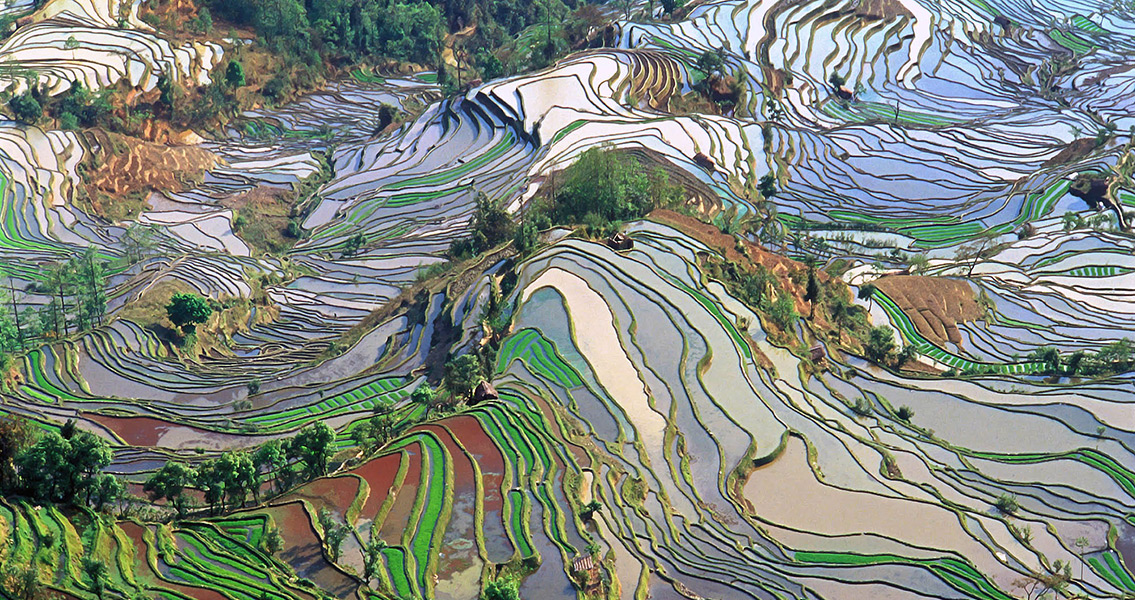<![CDATA[A study by scientists from Peking University and University College London has provided an outline of the development of rice cultivation in central China between the seventh and first millennium BCE. Zhenhua Deng, Ling Qin and Yu Gao, from the School of Archaeology and Museology at Peking University, and Alison Ruth Weisskopf and Dorian Q. Fuller from the Institute of Archaeology at UCL, focused on the Baligang site in Nanyang Basin, in what is now Central China. A Neolithic site on the Northern tributary of the Yangtze River, Baligang provides a long arhaeobotanical sequence from the seventh to the first millennium BCE, offering insight into the development of rice and millet agriculture in the region. Published in the open access journal Plos One, the study has the potential to clear up some long held ambiguities about the origins of farming practices in the region which is now China. Archaeologists generally agree that the prehistoric agricultural history of the region can be divided into two traditions: a northern one based on the cultivation of millet, and one centred around the Middle and Lower Yangtze basin based on rice. The relationship between these two agricultural traditions is less transparent however, as the study explains, "Some have argued for a single origin, with either rice agriculture spreading north and encouraging millet domestication, or early millet farming in the north spreading south and kick-starting millet cultivation. Others have argued for more than (one) independent center of millet domestication across north China, unconnected to Middle and Lower Yangtze basin rice domestication episodes." For their study, the scientists collected flotation samples from pits and cultural layers during excavation seasons in 2004 and 2007. In total, 1700 litres of soil from 123 samples were floated in a flotation tank at the site, before plant remains were collected through sieves with 0.3 mm mesh. Following drying, samples from the 2004 study were sent for analysis at UCL's facilities, while the 2007 samples were analysed at Peking University. Selected seed and crop specimens were then chosen for direct radio carbon dating using Accelerated Mass Spectrometry (AMS), which was combined with other data to form a chronology for the history of rice cultivation in the Baligang region. "Over the course of excavations, the chronology was initially based on material cultural affiliation. Fifteen dates were carried out on wood charcoal in support of this. In addition 18 radiocarbon dates were direct AMS dates on identified seed remains recovered from the archaeobotanical samples described in this paper." Thanks to the broad chronological scope of the data extracted from Baligang, the authors of the study have been able to construct a detailed picture of subsistence farming strategies in the region. They have confirmed, based on morphological characteristics of the rice, that rice had been domesticated in the region before 6300 BCE, although a lack of evolution in grain shape suggests that the people there were still a long way off from forming an agricultural economy. The researchers have put together a broad overview of rice cultivation in the region around Baligang during the Neolithic period and beyond. "Baligang provides a long sequence that registers many of the key trends in the Neolithic agriculture of central China." The effects of cultural factors have been charted, showing how the development of agricultural economies progressed in China. "As a response to cultural changes, crop assemblages varied in different periods along with the interaction between north and south China, with more millets grown in periods under the cultural influence of the north." Nevertheless, as is so often the case and as the authors of the study confirm, their results still leave a host of questions unanswered. "The tantalizing new evidence for domestication of rice at Baligang site before 6300 BC require data from other sites and periods to be put into an evolutionary trajectory from rice gathering to domestication." For more information: www.journals.plos.org Image courtesy of Wikimedia Commons user: Jialiang Gao ]]>
Rice Domestication Traced Back to 6300 BCE
